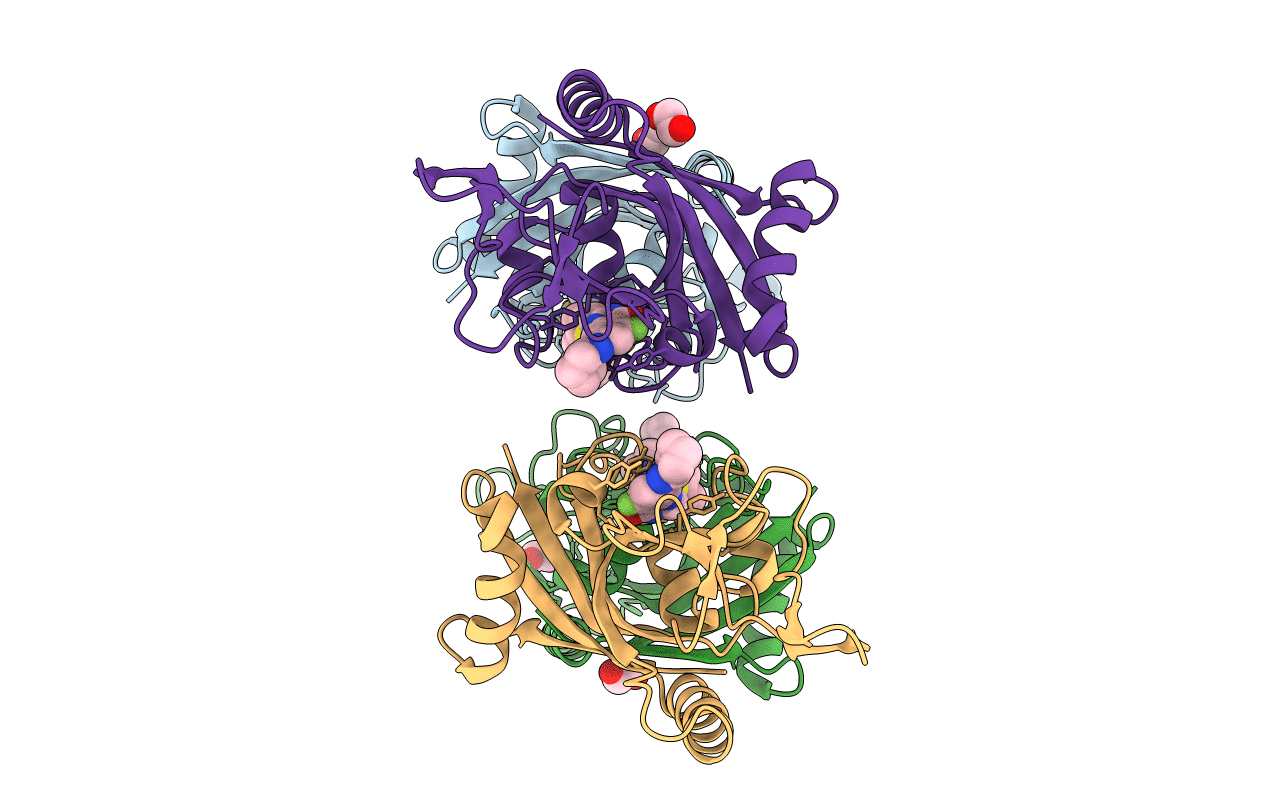
Deposition Date
2021-01-05
Release Date
2021-04-21
Last Version Date
2024-11-06
Entry Detail
PDB ID:
7L9Y
Keywords:
Title:
Human PARP14 (ARTD8), catalytic fragment in complex with RBN012042
Biological Source:
Source Organism:
Homo sapiens (Taxon ID: 9606)
Host Organism:
Method Details:
Experimental Method:
Resolution:
2.25 Å
R-Value Free:
0.29
R-Value Work:
0.26
R-Value Observed:
0.26
Space Group:
P 21 21 21


